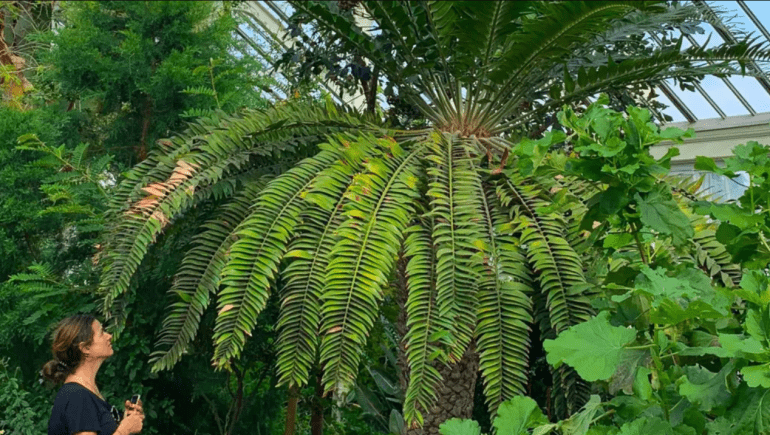- University of Southampton leads research project to find a female partner for the endangered Encephalartos woodii (E. woodii) plant.
- E. woodii, dubbed the world’s loneliest plant, faces extinction due to its inability to naturally reproduce.
- Dr. Laura Cinti employs drones and AI technology to survey South African forests for potential female specimens.
- Less than 2% of the 10,000-acre forest has been explored, highlighting the vastness of the undertaking.
- Despite previous efforts yielding only male clones, hopes are high for discovering a female E. woodii through AI-driven analysis.
- The Royal Botanical Gardens in Kew, London, continue to preserve the species, underscoring its symbolic significance as the “world’s loneliest plant.”
Main AI News:
Pioneering artificial intelligence technology is being harnessed in a groundbreaking endeavor to locate a suitable mate for an endangered botanical specimen, famously dubbed as the world’s loneliest plant.
Championed by the University of Southampton, a pioneering research initiative is underway spanning vast expanses of South African forests, home to the sole known Encephalartos woodii (E. woodii) specimen.
Exclusive to male clones, the entire population of E. woodii is incapable of natural reproduction, presenting a dire threat to its existence. This ancient species, with roots predating the reign of dinosaurs, now stands on the brink of extinction, categorized as one of the most imperiled life forms on Earth.
At the forefront of this quest is Dr. Laura Cinti, a distinguished research fellow at the University of Southampton, spearheading the first-ever project employing cutting-edge drones and AI algorithms to scout for a potential female counterpart to E. woodii.
Dr. Cinti shares her inspiration behind the mission, drawing parallels to a timeless narrative of unrequited love. Expressing optimism, she remarks, “I’m hopeful there is a female out there somewhere, after all there must have been at one time. It would be amazing to bring this plant so close to extinction back through natural reproduction.”
The solitary E. woodii specimen was initially unearthed in the Ngoye Forest back in 1895, marking a pivotal discovery in botanical history. However, subsequent attempts at propagation have yielded only male replicas, perpetuating the species’ reproductive isolation.
Leveraging advanced drone imaging technology, coupled with sophisticated AI analysis, less than 2% of the expansive 10,000-acre territory has been surveyed to date, underscoring the vastness of the endeavor.
Dr. Cinti elaborates on the innovative approach, stating, “With the AI, we are using an image recognition algorithm in order to recognise plants by shape. We generated images of plants and put them in different ecological settings, to train the model to recognise them.“
Despite decades of scientific inquiry, the full extent of the Ngoye Forest remains largely uncharted, leaving open the possibility of an elusive female specimen awaiting discovery.
While the species continues to be cultivated and preserved at the esteemed Royal Botanical Gardens in Kew, London, it remains an emblem of isolation, earning the poignant moniker of the “world’s loneliest plant.”
Conclusion:
The innovative use of AI and drone technology in the search for a female companion for the endangered E. woodii plant represents a significant advancement in conservation efforts. This approach not only showcases the potential of AI in ecological research but also highlights the urgency of preserving biodiversity. From a market perspective, such groundbreaking initiatives underscore the growing demand for sustainable solutions and the integration of technology in environmental conservation practices, presenting opportunities for investment and collaboration in the burgeoning field of conservation technology.

